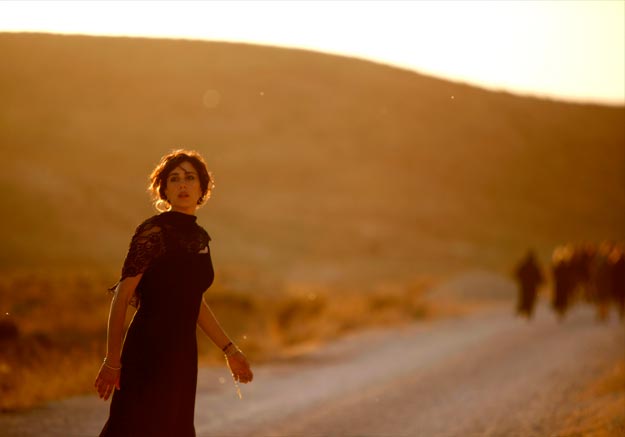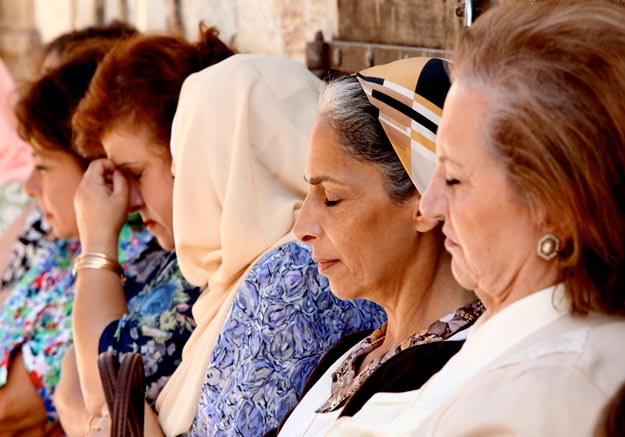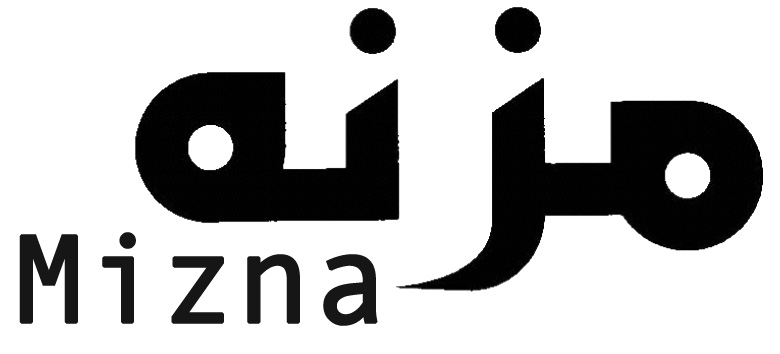Where Do We Go Now? (2011): Not very far I'm Afraid
 05-16-2012 | tagged
05-16-2012 | tagged  Arab cinema,
Arab cinema,  Arab film,
Arab film,  Lebanese,
Lebanese,  Nadine Labaki,
Nadine Labaki,  TIFF,
TIFF,  Toronto International Film Festival,
Toronto International Film Festival,  civil war,
civil war,  melodrama,
melodrama,  social drama,
social drama,  وهلّأ لوين؟ |
وهلّأ لوين؟ |  1 Comment |
1 Comment |  Email Article |
Email Article |  There is a village in Lebanon whose Muslim and Christian residents have long co-existed, in which each of the respective religious groups' house of worship is a stone throw’s distance away from the other’s. It is a village whose relative isolation, thanks to its remoteness and protectionism, has shielded it from interfaith strife and sanguinary chauvinism—until now. The story thus begs the question announcing the title of Nadine Labaki’s second feature, winner of the Toronto International Film Festival’s coveted People’s Choice Award, Where Do We Go Now?
There is a village in Lebanon whose Muslim and Christian residents have long co-existed, in which each of the respective religious groups' house of worship is a stone throw’s distance away from the other’s. It is a village whose relative isolation, thanks to its remoteness and protectionism, has shielded it from interfaith strife and sanguinary chauvinism—until now. The story thus begs the question announcing the title of Nadine Labaki’s second feature, winner of the Toronto International Film Festival’s coveted People’s Choice Award, Where Do We Go Now?
Labaki has impressively asserted her talent as actor and especially as director on the international film scene, not only having won the most prestigious audience award in world cinema for Where Do We Go Now? (2011, Et maintenant, on va où, وهلّأ لوين؟), but also for having debuted with a film that would secure theatrical distribution in the considerable US market and garner an enviable return on investment.
Caramel, Labaki’s first film, was a charming piece of melodrama that showcased her ability to elevate sentimental, even maudlin fare through delicate direction, incorporating many more uninvasive long shots than typical to dialogue scenes in melodramas. The film also illustrated Labaki’s (as co-screenwriter) adroit appreciation for how people communicate—perfunctorily, obliquely and fallaciously—as they aim to protect themselves and others. Caramel also demonstrated Labaki's deft humorism in both the situational and linguistic senses, having focused on the stories of select women, intimately and revealingly.
 Where Do We Go Now? does much of the same, but instead of focusing on the romantic and domestic lives of its female characters, it tackles communal and societal challenges. Whereas the first film suggested and lamented patriarchic society’s suppression and oppression of women, the latter suggests a solution to their subjugation: Women should take charge, especially considering how human life has been undermined by the machinations of the macho.
Where Do We Go Now? does much of the same, but instead of focusing on the romantic and domestic lives of its female characters, it tackles communal and societal challenges. Whereas the first film suggested and lamented patriarchic society’s suppression and oppression of women, the latter suggests a solution to their subjugation: Women should take charge, especially considering how human life has been undermined by the machinations of the macho.
Where Do We Go Now? tells the story of denizens of an unnamed village somewhere in Lebanon, sometime in the late 1990s. The village’s relative remoteness is communicated in an establishing shot depicting a crossing bridge drawn to a misty hillside, early in the film and again later. Such remoteness has for years served the villagers in having supported their ostensible collective wish to sustain the cohabitation of Muslims and Christians, while war waged in their surroundings, and to disallow the sectarian strife that had propelled the Lebanese Civil War from spoiling life for themselves, an effort that proves futile when long simmering sectarian tension rises in the wake of vandalism of church and mosque respectively then boils over when a young man returns to the village having met the worst of a sectarian skirmish.
Five writing credits is unusual and perhaps for good reason, for it is in the writing that Where Do We Go Now? falters, though the film does well elsewhere. The film is handsomely shot. Labaki aptly moves the camera much more than in Caramel, apt because Where Do We Go Now? includes far more scenes of the outdoors and scenes of frenzy than the more reserved Caramel (not that Caramel is particularly reserved.) Labaki elicits impassioned performances from her large cast and turns in a vital, charismatic performance herself. (Labaki was an actor before taking on directing.) The film is infused with effectively expressive music, heightening the emotional stakes of many scenes in the film. What Labaki’s film accomplishes most notably, however, what explains its audience appeal (as well as that of Caramel’s) is its thoroughgoing adherence to the classical Hollywood style. Indeed, Where Do We Go Now? does recall the work of Almadovar and Fellini, but the film so points to “social problem” films of 1940s and 1950s Hollywood that I couldn’t help but think that if the village had lain in a boarder state during The Civil War in the United States, a village whose population’s loyalty had been split between the Union and the Confederacy, that Where Do We Go Now? could well have been made by Hollywood then. The film even boasts a reproachful speech, typical to the genre, in which Labaki’s character Amal excoriates the men, Christian and Muslim, in the village café over the anguish they have brought upon the village.
The film often comes off as a parable. After all, the remote village is never named and in many ways is made to seem suspended in time. The broad categorization of factions in the village as Muslim and Christian does not reflect the complex conflict and convoluted alliances that characterized the Lebanese Civil War. The film also incorporates touches of magic realism and of lyrical dance, adding to its uncanniness. Yet the parable is thwarted by at least one detail—the year of its story. If the film’s story had been set in the 1930s then it would have seemed plausible that the women and religious leaders had managed to ward off the surrounding tumult by striving to keep the men ignorant about it, but not in the late 1990s! The dating of the film presents another problem: The Lebanese Civil War had ended in 1990 and no significant event of sectarian confrontation that I can think of took place in the late nineties. The dating of the story remains inexplicable to me.
Where Do We Go Now? also contains problems of moral congruity, which suggest a lack of command of the material on the part of the writers. The first of these is in the scathing attack against the town’s men, most of whom are reduced to sums of their hormonal urges. Only that one of these obdurate sectarian characters happens to be Christian Amal’s (Labaki) Muslim love interest, which undercuts scenes of courtship between them that could have otherwise been successful. Moreover, the only two reasonable, likeable adult males are made to be the imam and the priest. Thus, we are expected to believe that the religious leadership in Lebanon has not only contributed nothing to strife wrought by its followers, but has also contrived to prevent such corrosive behavior on the part of its followers—naïve.
 Another moral incongruity involves the Ukrainian belly dance troupe that the women of the village contrive to invite and with whom they then scheme to thwart a palpable escalation in sectarian tension between the men representing both religious groups, one that could turn to bloody confrontation, now that talk about armaments has taken hold. Yet, not only does the cockamamie scheme, involving hashish, pills, belly dance and playacting serve as little more than a temporary distraction for the men, but it does nothing to benefit the Ukrainian dancers. If Labaki’s film is a call for women’s empowerment then why are the Ukrainian dancers permitted, by the women of the village and by the writers, having exhibited solidarity with their Lebanese sisters, to depart the village, along with their “gig manager,” having experienced no amelioration in their occupational situation, considering their evident exploitation within the international (soft) sex industry. If anything, the women of the village appear to have participated in such exploitation.
Another moral incongruity involves the Ukrainian belly dance troupe that the women of the village contrive to invite and with whom they then scheme to thwart a palpable escalation in sectarian tension between the men representing both religious groups, one that could turn to bloody confrontation, now that talk about armaments has taken hold. Yet, not only does the cockamamie scheme, involving hashish, pills, belly dance and playacting serve as little more than a temporary distraction for the men, but it does nothing to benefit the Ukrainian dancers. If Labaki’s film is a call for women’s empowerment then why are the Ukrainian dancers permitted, by the women of the village and by the writers, having exhibited solidarity with their Lebanese sisters, to depart the village, along with their “gig manager,” having experienced no amelioration in their occupational situation, considering their evident exploitation within the international (soft) sex industry. If anything, the women of the village appear to have participated in such exploitation.
Where Do We Go Now? impresses despite its faulty writing. Yet, I find myself considering that with rigorous, politically conscious writing the film could have more credibly suggested an answer to the question that its title poses.


